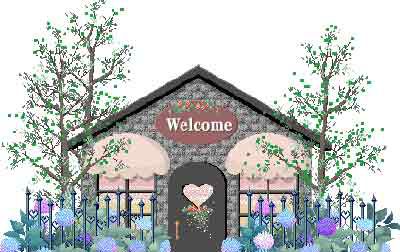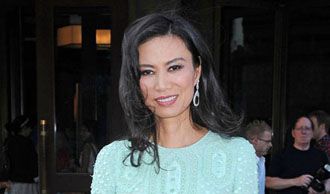美国文学简史完全笔记 Chapter 2
|
Chapter 2 American Romanticism Section 1 Early Romantic Period What is Romanticism? lAn approach from ancient Greek: Plato lA literary trend: 18c in Britain (1798~1832) lSchlegel Bros. I. Preview: Characteristics of romanticism 1.subjectivity (1)feeling and emotions, finding truth (2)emphasis on imagination (3)emphasis on individualism 每 personal freedom, no hero worship, natural goodness of human beings 2.back to medieval, esp medieval folk literature (1)unrestrained by classical rules (2)full of imagination (3)colloquial language (4)freedom of imagination (5)genuine in feelings: answer their call for classics 3.back to nature nature is ※breathing living thing§ (Rousseau) II. American Romanticism 1.Background (1)Political background and economic development (2)Romantic movement in European countries Derivative 每 foreign influence 2.features (1)American romanticism was in essence the expression of ※a real new experience and contained ※an alien quality§ for the simple reason that ※the spirit of the place§ was radically new and alien. (2)There is American Puritanism as a cultural heritage to consider. American romantic authors tended more to moralize. Many American romantic writings intended to edify more than they entertained. (3)The ※newness§ of Americans as a nation is in connection with American Romanticism. (4)As a logical result of the foreign and native factors at work, American romanticism was both imitative and independent. III. Washington Irving 1.several names attached to Irving (1)first American writer (2)the messenger sent from the new world to the old world (3)father of American literature 2.life 3.works (1)A History of New York from the Beginning of the World to the End of the Dutch Dynasty (2)The Sketch Book of Geoffrey Crayon, Gent. (He won a measure of international recognition with the publication of this.) (3)The History of the Life and Voyages of Christopher Columbus (4)A Chronicle of the Conquest of Granada (5)The Alhambra 4.Literary career: two parts (1)1809~1832 a. Subjects are either English or European b. Conservative love for the antique (2)1832~1859: back to US 5.style 每 beautiful (1)gentility, urbanity, pleasantness (2)avoiding moralizing 每 amusing and entertaining (3)enveloping stories in an atmosphere (4)vivid and true characters (5)humour 每 smiling while reading (6)musical language IV. James Fenimore Cooper 1.life 2.works (1)Precaution (1820, his first novel, imitating Austen*s Pride and Prejudice) (2)The Spy (his second novel and great success) (3)Leatherstocking Tales (his masterpiece, a series of five novels) The Deerslayer, The Last of the Mohicans, The Pathfinder, The Pioneer, The Prairie 3.point of view he theme of wilderness vs. civilization, freedom vs. law, order vs. change, aristocrat vs. democrat, natural rights vs. legal rights 4.style (1)highly imaginative (2)good at inventing tales (3)good at landscape description (4)conservative (5)characterization wooden and lacking in probability (6)language and use of dialect not authentic 5.literary achievements He created a myth about the formative period of the American nation. If the history of the United States is, in a sense, the process of the American settlers exploring and pushing the American frontier forever westward, then Cooper*s Leatherstocking Tales effectively approximates the American national experience of adventure into the West. He turned the west and frontier as a useable past and he helped to introduce western tradition to American literature. Section 2 Summit of Romanticism 每 American Transcendentalism I. Background: four sources 1.Unitarianism (1)Fatherhood of God (2)Brotherhood of men (3)Leadership of Jesus (4)Salvation by character (perfection of one*s character) (5)Continued progress of mankind (6)Divinity of mankind (7)Depravity of mankind 2.Romantic Idealism Center of the world is spirit, absolute spirit (Kant) 3.Oriental mysticism Center of the world is ※oversoul§ 4.Puritanism Eloquent expression in transcendentalism II. Appearance 1836, ※Nature§ by Emerson III. Features 1.spirit/oversoul 2.importance of individualism 3.nature 每 symbol of spirit/God garment of the oversoul 4.focus in intuition (irrationalism and subconsciousness) IV. Influence 1.It served as an ethical guide to life for a young nation and brought about the idea that human can be perfected by nature. It stressed religious tolerance, called to throw off shackles of customs and traditions and go forward to the development of a new and distinctly American culture. 2.It advocated idealism that was great needed in a rapidly expanded economy where opportunity often became opportunism, and the desire to ※get on§ obscured the moral necessity for rising to spiritual height. 3.It helped to create the first American renaissance 每 one of the most prolific period in American literature. V. Ralph Waldo Emerson 1.life 2.works (1)Nature (2)Two essays: The American Scholar, The Poet 3.point of view (1)One major element of his philosophy is his firm belief in the transcendence of the ※oversoul§. (2)He regards nature as the purest, and the most sanctifying moral influence on man, and advocated a direct intuition of a spiritual and immanent God in nature. (3)If man depends upon himself, cultivates himself and brings out the divine in himself, he can hope to become better and even perfect. This is what Emerson means by ※the infinitude of man§. (4)Everyone should understand that he makes himself by making his world, and that he makes the world by making himself. 4.aesthetic ideas (1)He is a complete man, an eternal man. (2)True poetry and true art should ennoble. (3)The poet should express his thought in symbols. (4)As to theme, Emerson called upon American authors to celebrate America which was to him a lone poem in itself. 5.his influence VI. Henry David Thoreau 1.life 2.works (1)A Week on the Concord and Merrimack River (2)Walden (3)A Plea for John Brown (an essay) 3.point of view (1)He did not like the way a materialistic America was developing and was vehemently outspoken on the point. (2)He hated the human injustice as represented by the slavery system. (3)Like Emerson, but more than him, Thoreau saw nature as a genuine restorative, healthy influence on man*s spiritual well-being. (4)He has faith in the inner virtue and inward, spiritual grace of man. (5)He was very critical of modern civilization. (6)※Simplicity#simplify!§ (7)He was sorely disgusted with ※the inundations of the dirty institutions of men*s odd-fellow society§. (8)He has calm trust in the future and his ardent belief in a new generation of men. Section 3 Late Romanticism I. Nathaniel Hawthorne 1.life 2.works (1)Two collections of short stories: Twice-told Tales, Mosses from and Old Manse (2)The Scarlet Letter (3)The House of the Seven Gables (4)The Marble Faun 3.point of view (1)Evil is at the core of human life, ※that blackness in Hawthorne§ (2)Whenever there is sin, there is punishment. Sin or evil can be passed from generation to generation (causality). (3)He is of the opinion that evil educates. (4)He has disgust in science. 4.aesthetic ideas (1)He took a great interest in history and antiquity. To him these furnish the soil on which his mind grows to fruition. (2)He was convinced that romance was the predestined form of American narrative. To tell the truth and satirize and yet not to offend: That was what Hawthorne had in mind to achieve. 5.style 每 typical romantic writer (1)the use of symbols (2)revelation of characters* psychology (3)the use of supernatural mixed with the actual (4)his stories are parable (parable inform) 每 to teach a lesson (5)use of ambiguity to keep the reader in the world of uncertainty 每 multiple point of view II. Herman Melville 1.life 2.works (1)Typee (2)Omio (3)Mardi (4)Redburn (5)White Jacket (6)Moby Dick (7)Pierre (8)Billy Budd 3.point of view (1)He never seems able to say an affirmative yes to life: His is the attitude of ※Everlasting Nay§ (negative attitude towards life). (2)One of the major themes of his is alienation (far away from each other). Other themes: loneliness, suicidal individualism (individualism causing disaster and death), rejection and quest, confrontation of innocence and evil, doubts over the comforting 19c idea of progress 4.style (1)Like Hawthorne, Melville manages to achieve the effect of ambiguity through employing the technique of multiple view of his narratives. (2)He tends to write periodic chapters. (3)His rich rhythmical prose and his poetic power have been profusely commented upon and praised. (4)His works are symbolic and metaphorical. (5)He includes many non-narrative chapters of factual background or description of what goes on board the ship or on the route (Moby Dick) Romantic Poets I. Walt Whitman 1.life 2.work: Leaves of Grass (9 editions) (1)Song of Myself (2)There Was a Child Went Forth (3)Crossing Brooklyn Ferry (4)Democratic Vistas (5)Passage to India (6)Out of the Cradle Endlessly Rocking 3.themes 每 ※Catalogue of American and European thought§ He had been influenced by many American and European thoughts: enlightenment, idealism, transcendentalism, science, evolution ideas, western frontier spirits, Jefferson*s individualism, Civil War Unionism, Orientalism. Major themes in his poems (almost everything): lequality of things and beings ldivinity of everything limmanence of God ldemocracy levolution of cosmos lmultiplicity of nature lself-reliant spirit ldeath, beauty of death lexpansion of America lbrotherhood and social solidarity (unity of nations in the world) lpursuit of love and happiness 4.style: ※free verse§ (1)no fixed rhyme or scheme (2)parallelism, a rhythm of thought (3)phonetic recurrence (4)the habit of using snapshots (5)the use of a certain pronoun ※I§ (6)a looser and more open-ended syntactic structure (7)use of conventional image (8)strong tendency to use oral English (9)vocabulary powerful, colourful, rarely used words of foreign origins, some even wrong (10) sentences catalogue technique: long list of names, long poem lines 5.influence (1)His best work has become part of the common property of Western culture. (2)He took over Whitman*s vision of the poet-prophet and poet-teacher and recast it in a more sophisticated and Europeanized mood. (3)He has been compared to a mountain in American literary history. (4)Contemporary American poetry, whatever school or form, bears witness to his great influence. II. Emily Dickenson 1.life 2.works (1)My Life Closed Twice before Its Close (2)Because I Can*t Stop for Death (3)I Heard a Fly Buzz 每 When I died (4)Mine 每 by the Right of the White Election (5)Wild Nights 每 Wild Nights 3.themes: based on her own experiences/joys/sorrows (1)religion 每 doubt and belief about religious subjects (2)death and immortality (3)love 每 suffering and frustration caused by love (4)physical aspect of desire (5)nature 每 kind and cruel (6)free will and human responsibility 4.style (1)poems without titles (2)severe economy of expression (3)directness, brevity (4)musical device to create cadence (rhythm) (5)capital letters 每 emphasis (6)short poems, mainly two stanzas (7)rhetoric techniques: personification 每 make some of abstract ideas vivid III. Comparison: Whitman vs. Dickinson 1.Similarities: (1)Thematically, they both extolled, in their different ways, an emergent America, its expansion, its individualism and its Americanness, their poetry being part of ※American Renaissance§. (2)Technically, they both added to the literary independence of the new nation by breaking free of the convention of the iambic pentameter and exhibiting a freedom in form unknown before: they were pioneers in American poetry. 2.differences: (1)Whitman seems to keep his eye on society at large; Dickinson explores the inner life of the individual. (2)Whereas Whitman is ※national§ in his outlook, Dickinson is ※regional§. (3)Dickinson has the ※catalogue technique§ (direct, simple style) which Whitman doesn*t have. Edgar Allen Poe I. Life II. Works 1.short stories (1)ratiocinative stories a. Ms Found in a Bottle b. The Murders in the Rue Morgue c. The Purloined Letter (2)Revenge, death and rebirth a. The Fall of the House of Usher b. Ligeia c. The Masque of the Red Death (3)Literary theory a. The Philosophy of Composition b. The Poetic Principle c. Review of Hawthorne*s Twice-told Tales III. Themes 1.death 每 predominant theme in Poe*s writing ※Poe is not interested in anything alive. Everything in Poe*s writings is dead.§ 2.disintegration (separation) of life 3.horror 4.negative thoughts of science IV. Aesthetic ideas 1.The short stories should be of brevity, totality, single effect, compression and finality. 2.The poems should be short, and the aim should be beauty, the tone melancholy. Poems should not be of moralizing. He calls for pure poetry and stresses rhythm. V. Style 每 traditional, but not easy to read VI. Reputation: ※the jingle man§ (Emerson) VII. His influences |








